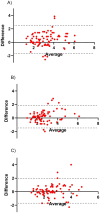Constructing a measure for self-perceived open organizational culture in a university hospital pharmacy
- PMID: 39478817
- PMCID: PMC11521865
- DOI: 10.3389/fmed.2024.1428941
Constructing a measure for self-perceived open organizational culture in a university hospital pharmacy
Abstract
Background: An open organizational culture in the workplace represents an environment where information, ideas, and feedback are freely exchanged among all members, regardless of position or rank. Currently, there are no valid survey instruments to measure this culture within a healthcare context. To address this gap, we developed a survey instrument to measure self-perceived open organizational culture at a university pharmacy using a test re-test study design.
Methods: Data were collected during classroom training on basic mediation skills study. Participants completed the same questionnaire before (test phase) and after the training (validation phase). The questionnaire included statements assessing open organizational culture. The data were analyzed using standardized psychometric methods, including correlations, Exploratory Factor Analysis (structural validity), and construct validity by correlating the open organizational culture scores with the Interpersonal Communication Inventory.
Results: In the test phase, 191 participants (161 females, 84%; response rate = 39.7%) contributed to the initial construction of the self-perceived open organizational culture survey instrument. In the validation phase, 81 of the original respondents completed the questionnaire again. Three latent factors were identified, retaining 22 of the 37 items: "enabling systems" (7 items), "open behavior" (8 items), and "trusting and supporting coworkers" (7 items). High correlations were found among the three factors (r > 0.6), and between these factors and the Interpersonal Communication Inventory (r > 0.35). Cronbach's alphas were all above 0.85, indicating good internal consistency. During the validation phase, the factors demonstrated high internal consistency, test/re-test correlations, and agreement.
Conclusion: This study presents a 22-item survey instrument for measuring individual differences in self-perceived open organizational culture within a university hospital pharmacy. The instrument demonstrates internal consistency and construct validity. Further validation of its psychometric properties and testing in other healthcare departments are recommended.
Keywords: construct validation; healthcare; open organizational culture; reliability; survey; validation.
Copyright © 2024 Rietdijk, Maljaars-Hendrikse, van Dijk, Malik, Tan and van der Kuy.
Conflict of interest statement
The authors declare that the research was conducted in the absence of any commercial or financial relationships that could be construed as a potential conflict of interest. The author(s) declared that they were an editorial board member of Frontiers, at the time of submission. This had no impact on the peer review process and the final decision.
Figures

References
LinkOut - more resources
Full Text Sources
Miscellaneous

